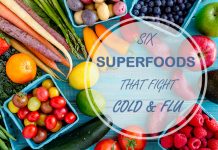There are 300 or more different species of Aloe. The most prominent variety, Aloe barbadensis, Miller commonly referred to as Aloe vera, is especially noted for its amazing healing abilities. Although Aloe vera resembles a cactus, it actually belongs to the family of liliaceous plants and is indigenous to subtropical regions and deserts.
The etymology of the word Aloe is Arabic; It’s derived from the Arabic word “Alloeh,” which means: “shining bitter substance.” While the word “vera” stems from Latin and means “true.” 6,000 year old stone carvings containing images of Aloe vera plants have been found in Egypt, where Aloe vera was known as the “plant of immortality”. In fact, it was commonly given to deceased pharaohs as a burial gift! 2000 years ago Greek scientists deemed Aloe vera the “universal panacea.” Historically, Aloe vera has been successfully used by traditional medicine practitioners in many disparate cultures including: Greece, Egypt, India, Mexico, Japan and China. According to legend, Egyptian queens Nefertiti and Cleopatra used it as part of their regular beauty regimes. Alexander the Great and Christopher Columbus used it to treat soldiers’ wounds.
“The potency of Aloe vera is due to its rich variety of ingredients which are present in perfect balance and work together as a team. Although the solid portion of the plant forms only 1%-1.5%, the rest being water, this small amount of active ingredient can produce a substantial effect. The only way to account for this is to accept the philosophy of synergism within the plant. Synergism means that the effect of the whole is greater than the effects of the component parts, so although individual members of the team could only have an effect, together they can achieve a great deal more.”
The Structure of the leaf is basically made up of:
• The Rind – is the tough outer layer and is where the synthesis and production of all the nutrients in Aloe Vera takes place
• The Sap – is bitter and contains anthraquinones (latex)
• The Mucilage layer – is rich in long chain sugars called polysaccharides
• The Inner Leaf Gel – is sterile and can be used immediately and contains the majority of nutrients in the Aloe Vera plant
DIY Aloe Vera Gel
Equipment
• Six Aloe leaves (depending on size) from a mature and healthy plant. Leaves that are anywhere from four (4) to six (6) inches in length make a generous 1/4-cup amount.
• A clean sharp knife
• A clean cutting board and work surface
• A clean Glass container (It’s best to store your gel in the fridge preferably in a dark or opaque glass container to protect it from light which can degrade it). Make sure the jar has a secure fitting lid to keep air out.
• Food processor or blender
• Paper towels
• Spoon and spatula
* Optional: rubber gloves to protect your hands from the serrated edges of the leaf.

Method
1. Begin by washing your hands. You don’t want to introduce any unwanted bacteria into your gel and contaminate it. Make sure your work surface, and utensils are clean when preparing your gel.
2. Choose leaves that are mature, thick, fleshy and a deep green in color. Look for leaves that are at least 4-6 inches in length. The oldest and largest outermost leaves near the bottom of the plant are ideal; they contain a thick, nutrient-rich gel layer. Did you know that cut Aloe leaves do not grow back? However, the cut leaves will eventually stimulate the emergence of new growth from the center of the plant.
3. Remove the leaves. Use a sharp knife to create a clean cut, without harming the plant of course. Cut close to the base of the leaf and slice away from the center of the plant.
4. Rinse the outer skin of the leaves and knife under running water. Now place the cut leaves in a bowl at a 45 degree angle for 15 minutes or so. This step enables the dark yellow, very bitter Aloe juice or latex to drain out, which is found in the cells located just under the surface of the leaf. The latex is a very powerful laxative, which can irritate the intestines. The laxative effect could cause potassium levels to become low.
5. Now carefully remove the serrated edges and skin. Mature Aloe Vera leaves are slightly curved. Place the concave side down on a cutting board. Next, slice around the perimeter. This will leave you with the top and bottom layer of skin, exposing the Aloe gel in between. The top layer of skin comes off next. Run the knife just under the surface and peel it away. Now you can flip the leaf over and do the same to the other side.
6. Remove the gel from each leaf and place it in a clean jar until you’re ready to process the batch in a blender or a food processor.
7. Transfer the gel into a food processor and process until it’s uniformly mixed. Next add a scant quarter teaspoon of vitamin C powder (100% Pure Powder; non-GMO, Pharmaceutical Grade (USP); GMP Quality Assured in the form of ascorbic acid to every cup of gel. It neutralizes oxygen on contact thus acting as a preservative. Or you can add 400 IU of vitamin E. In its natural form, vitamin E is designated d-, as in-d-alpha-tocopherol (recommended). You can also use grapefruit extract as a preservative. Add the gel and your choice of preservative in the food processor or blender and thoroughly mix or you can manually stir it into the processed gel with a spoon.







